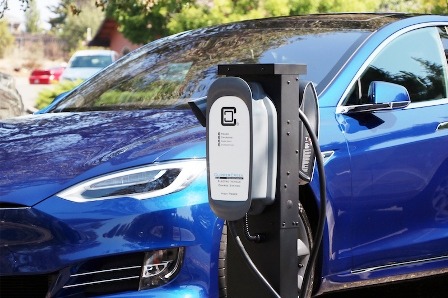In automotive power electronics (inverters, onboard chargers, DC-DC converters), the transition to silicon carbide MOSFETs and high voltage systems above 800V has been increasing in pace in 2021.
As revealed in the IDTechEx report titled: “Power Electronics for Electric Vehicles 2022 –2032, Renault, BYD and Hyundai all announced new 800V vehicle platforms, which will adopt silicon carbide MOSFETs in their power electronics through to 2025.
Moreover, with the Mach E release in late 2021, Ford joined the likes of Tesla (all models), BYD (Han) and Toyota (Mirai) in having an electric car model containing silicon carbide power electronics available on the market.
 The transition is presenting fresh challenges for power module package materials, as higher switching frequencies, increased power densities, and increased operational temperatures are demanded all whilst maintaining a 15-year service life.
The transition is presenting fresh challenges for power module package materials, as higher switching frequencies, increased power densities, and increased operational temperatures are demanded all whilst maintaining a 15-year service life.
As the power density of semiconductor chips has been increasing exponentially over the past decade, new double-sided cooling designs, copper wire bonds and lead frames have emerged as the enabler.
Perhaps most critically, as junction temperature requirements have approached 175 – 200 degrees C, the limits of conventional solders have made way for novel die-attach materials.
Nano silver-sintered materials and copper sintered materials have a high melting point compared with traditional tin-based lead-free solders and support high thermal temps above 250 degrees, helping maximize the transition towards power-dense silicon carbide MOSFETs.
 While nanosilver sinter pastes are on the market (e.g. Alpha’s Argomax), higher-performing copper sintered materials are round the corner, with companies such as Hitachi, Showa Denko, and Mitsui demonstrating the technology and/or in qualification stages for the automotive industry.
While nanosilver sinter pastes are on the market (e.g. Alpha’s Argomax), higher-performing copper sintered materials are round the corner, with companies such as Hitachi, Showa Denko, and Mitsui demonstrating the technology and/or in qualification stages for the automotive industry.
Although the transition to silicon carbide reduces the overall die area, the chips and corresponding die-attach materials are more expensive than what they replace.
©Copyright MOTORING WORLD INTERNATIONAL.
All rights reserved. Materials, photographs, illustrations and other digital content on this website, may not be reproduced, published, broadcast, rewritten or redistributed in whole or in part without prior written permission from Motoring World International
Contact: [email protected]





